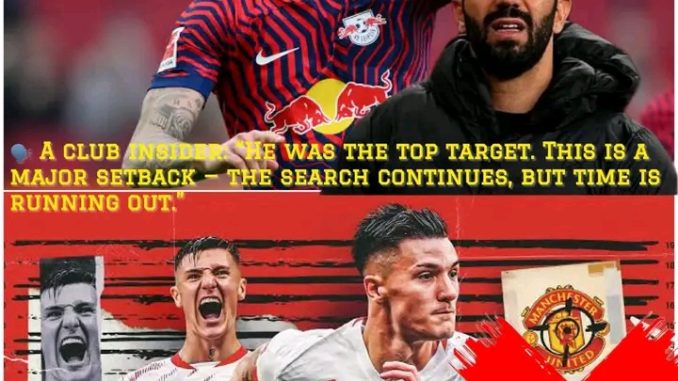
Manchester United’s chase for RB Leipzig forward Benjamin Sesko has ended in bitter disappointment, as the 22-year-old Slovenian has chosen to sign for Newcastle United instead. This decision not only brings United’s pursuit to a screeching halt but also leaves new manager Ruben Amorim without his top striker target ahead of the looming 2025/26 Premier League campaign. Despite United’s firm interest and groundwork laid by recruitment chief Christopher Vivell, Sesko opted for Tyneside, delivering a stinging setback to United’s summer ambitions.
The transfer, estimated at around €80 million (£69 million), had been a linchpin in United’s plans to revitalize their attack following a woeful return of just 44 Premier League goals last season. The Red Devils had pegged Sesko as the ideal long-term solution—tall, fast, clinical, and still developing. Losing him now throws a wrench into their squad rebuilding strategy, and it raises uncomfortable questions about United’s pull in the modern transfer market.
What makes the blow sharper is that United had counted on Vivell’s ties to both Leipzig and Salzburg to tilt the scale in their favor. Sesko’s impressive physical profile—standing at 6ft 4in and clocking a top speed of 35.69 km/h—had many at Old Trafford hoping he could replicate Erling Haaland’s trajectory. But Newcastle’s promise of Champions League football and a compelling long-term vision under Eddie Howe tipped the balance. Their offer also aligned with a gentleman’s agreement allowing Sesko to leave Leipzig for a set fee between €80m-€90m. Newcastle’s push was hastened by star striker Alexander Isak’s looming departure, with his sale potentially funding Sesko’s arrival.
This failed move leaves Amorim staring down a forward line riddled with issues. Rasmus Højlund, despite a promising pre-season performance including a brace in a 4-1 win against Bournemouth, still lacks the consistency needed to lead the line. Joshua Zirkzee has failed to impress, while Rashford is on loan at Barcelona and the futures of Jadon Sancho, Antony, and Garnacho remain uncertain. Suddenly, the frontline looks both thin and volatile.
While Bryan Mbeumo and Matheus Cunha add fresh energy and speed, neither fits the mold of a traditional centre-forward. Amorim’s preferred 3-4-3 setup relies on a strong central striker to act as a pivot, holding up the ball and enabling wide players. Without such a figure, tactical adjustments are on the table, and a shift to a 4-4-2 or a more counter-attacking approach may be in the offing.
This entire ordeal has also spotlighted United’s financial constraints. Their inability to sell off high-wage players has stifled spending flexibility. With alternatives like Ollie Watkins and Nicolas Jackson considered too pricey, and Leipzig refusing to negotiate below Sesko’s agreed clause, United’s options rapidly evaporated. The failure to land their man isn’t just about timing—it’s about structural inefficiencies the club has yet to resolve.
Amorim had envisioned shaping Sesko into the Premier League version of Viktor Gyökeres, the forward he helped develop at Sporting Lisbon. Now, with limited resources and an incomplete squad, the pressure mounts. The clock is ticking, expectations are sky-high, and the fans are watching closely. Any further stumbles in the transfer market could define Amorim’s tenure before it even gets fully underway.
In contrast, Newcastle have pulled off a slick and ruthless move. Snagging Sesko not only fortifies their frontline but sends a clear signal—they’re not just here to make up the numbers. With Champions League football, a unified squad, and ambitious ownership, the Magpies look like they’ve pulled ahead in the race United were once expected to dominate. For United, it’s back to the drawing board—with little time left before the transfer window slams shut.
Leave a Reply